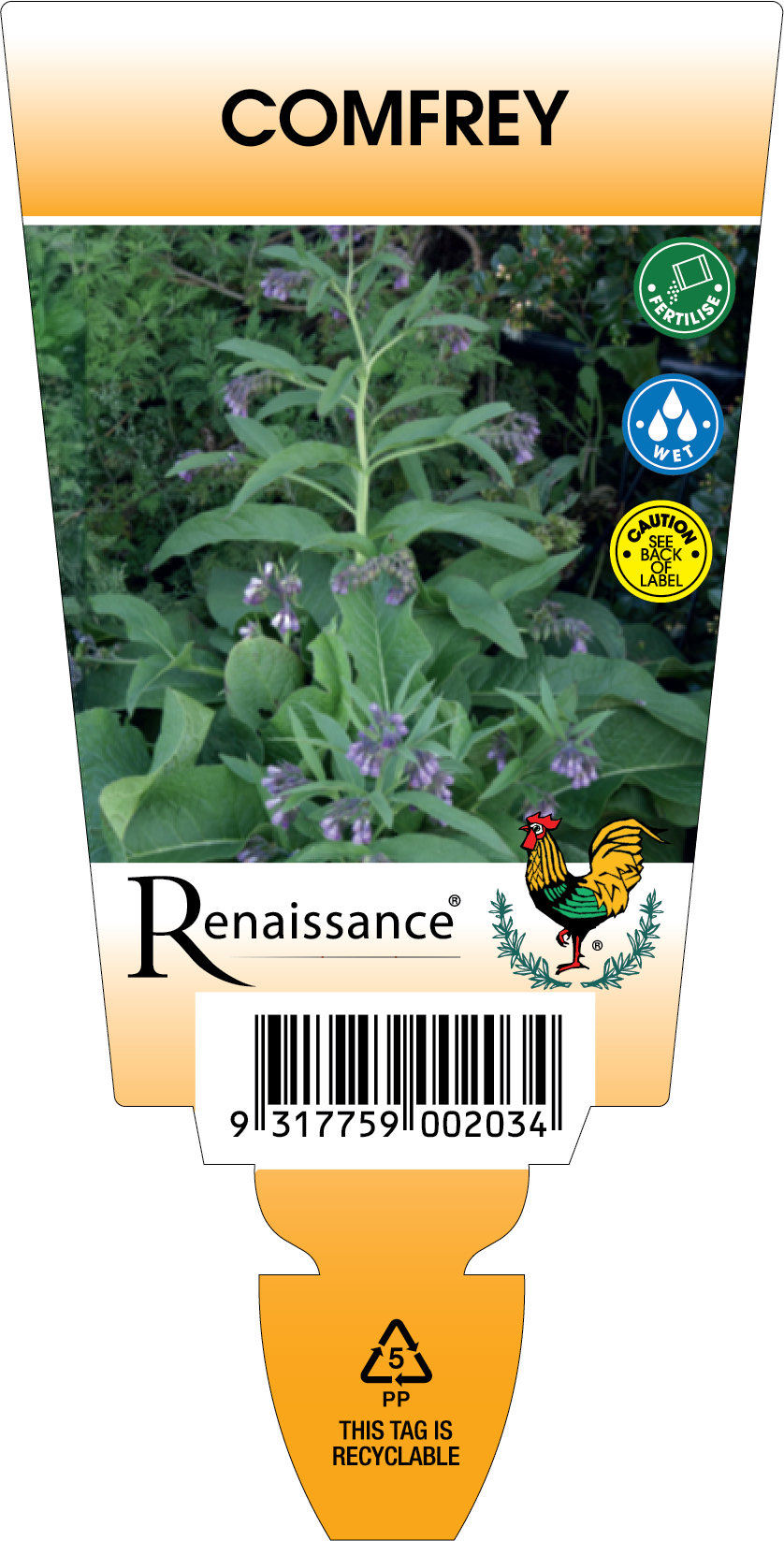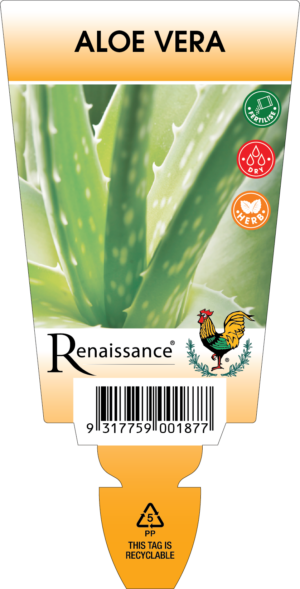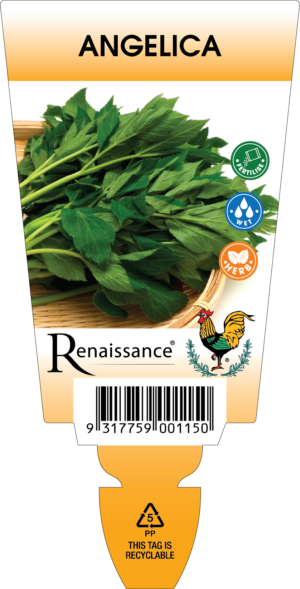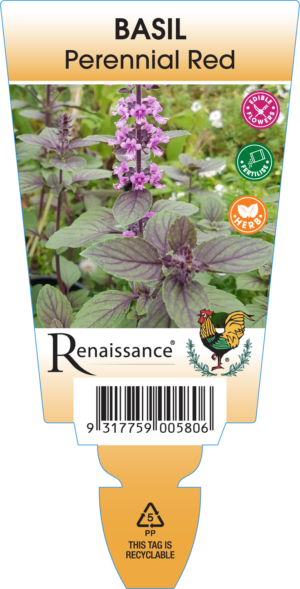Description
(Symphytum officinale)
Comfrey is used to treat wounds and reduce the inflammation associated with sprains and broken bones. The roots and leaves contain allantoin, a substance that helps new skin cells grow, along with other substances that reduce inflammation and keep skin healthy. Comfrey ointments were often applied to the surface of the skin to heal bruises as well as pulled muscles and ligaments, fractures, sprains, strains, and osteoarthritis.
Growing Tips
Try to plant Comfrey in the right position the first time as any root disturbance will create new plants. If it has to be removed, simply cover the clump with several layers of wet newspaper and then top with mulch. The comfrey will rot out, leaving a rich, black compost.
Use
Never take Comfrey by mouth. Severe liver poisoning and even death may occur. Use herb and leaf ointments, creams, and other topical preparations. Toxic alkaloids can be absorbed through the skin so it’s important to follow these safety recommendations: Never apply Comfrey to broken skin. Use only small amounts of Comfrey-containing creams for no longer than 10 days at a time. Do not use any Comfrey product for more than 4-6 total weeks in a year. Comfrey has many healing properties to it. Briefly the roots and leaves contain allantoin. Allantoin is a protein with hormonal like qualities to it that stimulate cell proliferation. It is the allantoin that gives comfrey its reputation for healing wounds, broken bones, burns, sprains, sore joints, dry skin and for reducing the swelling associated with fractures. Fresh, clean Comfrey leaves can be used in a poultice to treat these injuries. Comfrey salves are readily available from health food stores. It is not recommended to take Comfrey internally as liver damage has been known to occur from extended ingestion. Topical use is safe as the alkaloids will not penetrate the skin.
Precautions
Comfrey contains toxic substances that can cause severe liver damage and possibly even death. For this reason, Comfrey and Comfrey-containing products should never be taken orally. Comfrey contains toxic substances that can be absorbed by the skin, so even topical preparations should be used for only a short time under the supervision of a knowledgeable health care provider. Comfrey should never be applied to open wounds or broken skin. Do not use Comfrey if you have liver disease, alcoholism, or cancer. Children, the elderly and pregnant or breastfeeding women should not use Comfrey products — either orally or topically — under any circumstances.
Herb Attributes
| Harvest | Regular cutting will stop the plant from flowering so it can put this energy into leaf production. |
|---|---|
| Position | Full Sun |
| Height | 60cm |
| Width | 75cm |
| Lifespan | Perennial |





